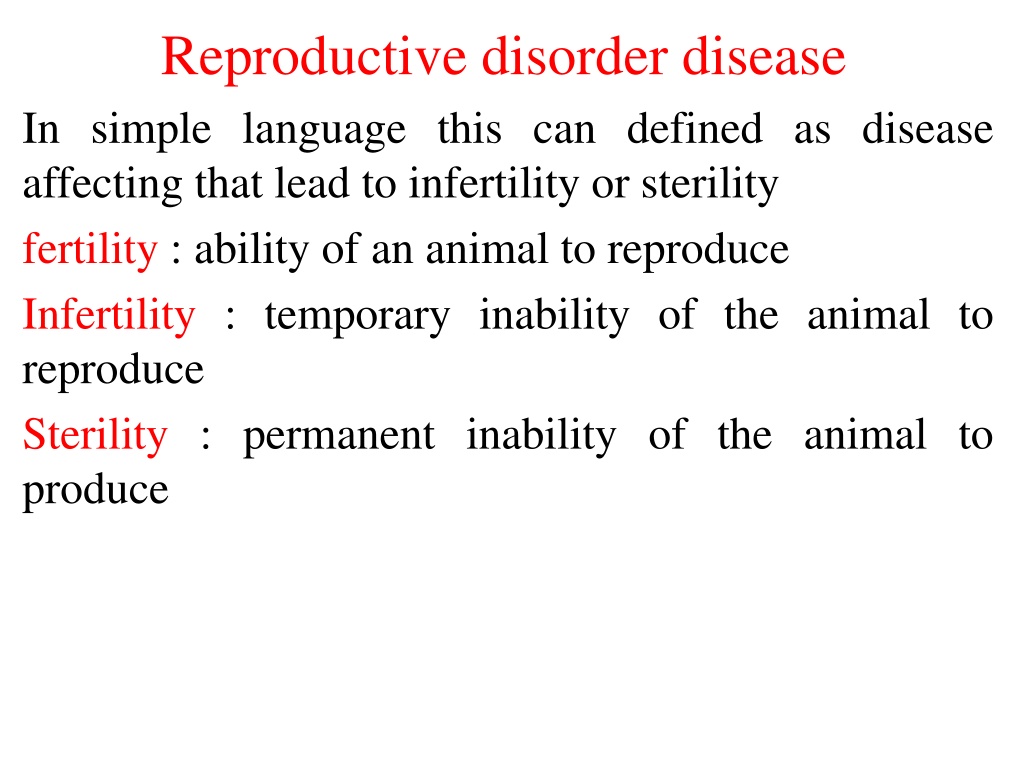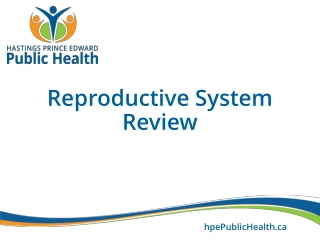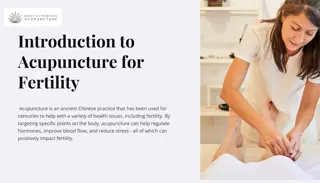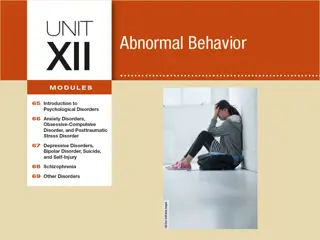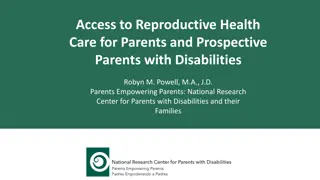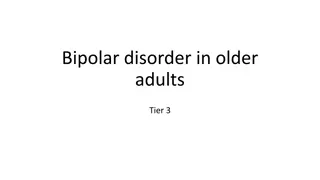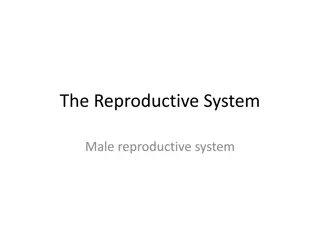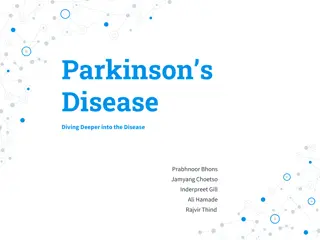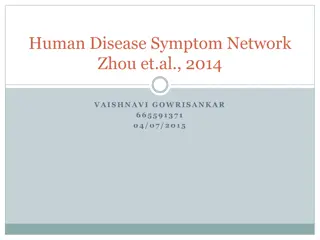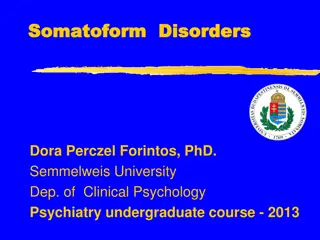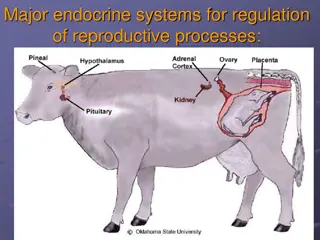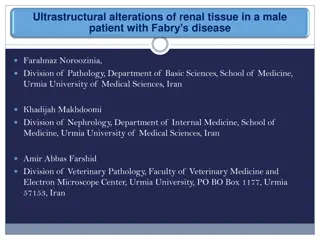Reproductive disorder disease
Reproductive disorders in animals can lead to infertility or sterility, affecting their ability to reproduce. Causes include congenital, hormonal, nutritional, infectious, and management factors. Congenital or hereditary causes may involve conditions like hermaphroditism, freemartin syndrome, and ovarian abnormalities. Understanding true hermaphrodites and pseudohermaphrodites helps in recognizing different reproductive anomalies. Acquired anomalies, such as bursal adhesions and tumors, can also result in sterility. Awareness of these issues is crucial for managing animal fertility and health.
Download Presentation

Please find below an Image/Link to download the presentation.
The content on the website is provided AS IS for your information and personal use only. It may not be sold, licensed, or shared on other websites without obtaining consent from the author.If you encounter any issues during the download, it is possible that the publisher has removed the file from their server.
You are allowed to download the files provided on this website for personal or commercial use, subject to the condition that they are used lawfully. All files are the property of their respective owners.
The content on the website is provided AS IS for your information and personal use only. It may not be sold, licensed, or shared on other websites without obtaining consent from the author.
E N D
Presentation Transcript
Reproductive disorder disease In simple language this can defined as disease affecting that lead to infertility or sterility fertility : ability of an animal to reproduce Infertility : temporary inability of the animal to reproduce Sterility : permanent inability of the animal to produce
Causes of sterility 1- congenital 2- hormonal 3- nutritional 4- inflectional 5- management 6- more than one causes
Causes of congenital or hereditary 1- hermaphrodite 2- freemartins 3- hypoplasia of ovary 4- ovarian agenesis 5- fallopian tube agenesis 6- para ovarian cyst 7- atresia of the valva
8- segmental hypoplasia of mullerian duct A. narrowing of vagina B. double of cervix C. double os of cervix D. uterus unicornis E. double of uterine horne F. white heifer disease
Acquired anomaly causes 1- Overo-bursal adhesion 2- adhesion of uterus 3-prolapse of annular rings 4- fracture of pelvis 5- ovarian tumor 6- vulval tumor
hermaphrodite True hermaphrodite: An individual having both testis and ovary or ovotestes, is called true hermaphrodite. Pseudohermaphrodite: An individual having gonads of only one sex (either ovary or testis) but external genitalia and secondary characters of opposite sex Male pseudohermaphrodite: An individual having testes but phenotypically resembles to female, is called male pseudohermaphrodite Female pseudohermaphrodite: An individual having ovaries but phenotypically resembles to male, is called female pseudohermaphrodite.
Bovine freemartin : a sterile female calf , born co-twin with a male fetus that shows underdevelopment or misdevelopment genital tract as a result of early development of vascular anastomoses between fetuses of different gender. In cattle this condition is observed in 95% of twin pregnancies
Causes :Placental anastomoses that occur in the early embryonic life are responsible for freemartinism; their presence in females results in masculinisation Clinical signs : 1-the vulva is smaller and present tuft of hair 2- enlarged clitoris is a common finding and complete hymen 3- vagina is shorter than in normal development 4-the uterus rudimentary or cord like and small ovary 5- presence of seminal vesicle
Diagnosis freemartin 1- vagina is shorter(5-7cm) than in normal development(12- 15cm) 2- molecular and cytogenetic analysis
Ovarian hypoplasia inactive ovaries 1- hereditary causes 2- the case either heifer or cow 3- either bilateral or unilateral ovary effect 4- the surface of ovary groove 5- the reproductive system infantile 6- clinical signs of case anestrous 7- no respond to treatment with folligon folligon 1- decrease FSH hormone 2 the case mostly cow 3- always bilateral ovary effected 4- the surface of ovary smooth 5- the reproductive system normal 6- clinical signs of case anestrous 7 respond to treatment by
Ovarian hypoplasia Different between normal and abnormal ovary histology Ovarian hypoplasia in cow
Segmental aplasia of the mullerian duct Uterus didelphys and double cervix in cow Double cervix in cow
Segmental aplasia of the mullerian duct Uterus uncorns in cow Uterus uncorns in sow
Segmental aplasia of the mullerian duct White heifer disease: Due to arrested development of the Mullerian duct system, the uterus and the vagina are incompletely developed and development of hymen membrane but the ovaries and vulva are always normal. This abnormality in heifer is called white heifer disease. Because shorthorn breed found in white
Atresia of vulva The vulva of heifer is small so causes dystocia so must treatment by episitotomy
Acquired defect Adhesion of uterus :adhesion of uterus to omentum, intestine or to abdominal wall may occur following caesarean operation . Stenosis of cervix :may as a result of severe cervicitis or due to traumatic injuries . Forceful introduction of AI gun also leads to this. Fracture of pelvis :this leads to stenosis of the pelvis . This increases the chances of dystocia Tumors :of the vagina , cervix and uterus causing obstruction
Acquired defect Ovaro-bursal adhesion: may be due to following: 1- infection causes ex. extension of peritonitis due to traumatic reticulitis into the ovaro-bursal area 2- peritoneal tuberculosis 3- defective manipulation of ovaries like removal of corpus luteum leading to bleeding and adhesions
